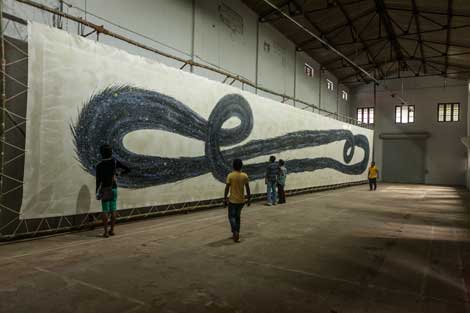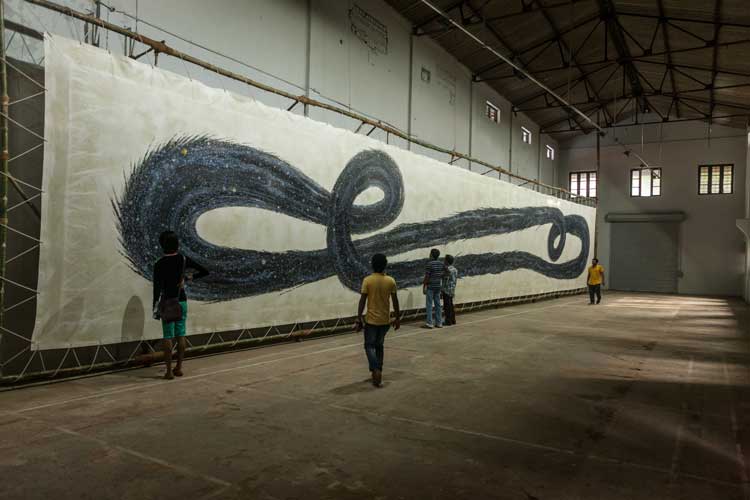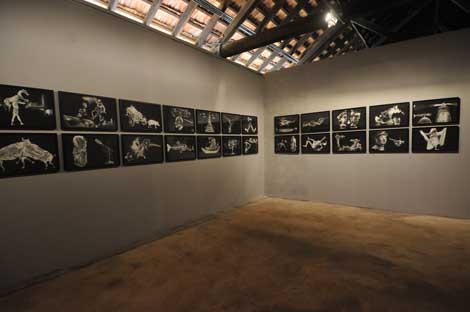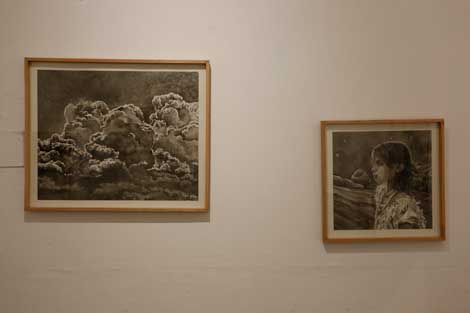The second edition of the Kochi Muziris Biennale held on the Malabar Coast of Kerala, South India, kicked off with great fanfare. Thunderous music at the opening ceremony from a traditional ensemble of drums, cymbals, pipes, and horns normally used before evening invocations in the local temples set the tone for “Whorled Explorations,” 2014. Kerala’s historical association with cosmologists and astronomers from the 14th –17th centuries became the inspiration and point of departure for the curator Jitish Kallat. His selection of more than 90 artists from across the globe addressed questions of science, cosmology and the mysteries of the universe. History, and the significance of time were realized through numerous innovative interpretations. But most importantly, Kallat’s confluence of artists came together in their shared cosmopolitanism that made for works that were as contemplative as they were compelling, and as purposeful as they were provocative in their use of materials, mediums and methodologies.
Imagination and skill colluded in the most effective evocation of primordial existence. Shantamani Muddaiah’s outdoor charcoal sculpture Backbone, 2014, shaped to resemble spinal vertebrae recalled the very origins of human forms, while Aji VN’s textured charcoal and water color drawings Untitled II, 2014, showcased the horizon meeting the ocean in a gesture of celestial confederation. Sri Lankan Muhanned Cader’s graphite drawings on wood titled Galle Fort, Fort Kochi, 2014, rejected the specificity of colonial landscape painting through his oddly shaped wooden frames and timeless, fluid seascapes. Universal questions of life and mortality were taken on by Madhusudan’s haunting charcoal portraits of military generals in Logic of Disappearance, 2013, as Belgian artist Hans Op de Beeck’s stirring black-and-white watercolor portraits that he referred to as his “visual fictions,” represented the complexity of the human condition.
Found objects became a point of convergence for artists re-imagining the beginning of civilization. Fantastical creatures devised from clay and found materials in Sahej Rahal’s Harbinger, 2014, characterized his insightful recreation of the beginning of the universe, as much as Australian Fiona Hall’s viscerally evocative wasteland of skulls made from earth pigments on bark used by the aboriginal people of Australia created impending doom. For Norwegian Sissel Tolaas in Fear, 2014, ballast stones used to balance cargo found on the shores of the Malabar Coast were infused with his database of collected sweat that recalled centuries of prior life and civilizations. And for Chinese artist Xu Bing leaves and discarded materials placed behind a translucent screen imitated traditional Chinese landscape painting.
The cosmos was explored in a series of works that spoke to each other regardless of the artists’ origins. Natraj Sharma reconstructed planet earth in various geometric shapes that were set atop large pedestals. At the base, industrial cog wheels represented the interconnectedness of all things in the universe. Sharma’s Alternate Shapes for the Earth, 2014, corresponded with N.S. Harsha’s ominous 79-foot painted loop of the cosmos titled Punarapi Janaram, Punarapi Maranam, (Again Birth, Again Death), 2013. Inspired by a Sanskrit hymn referring to the endless cycle of birth and death, the painting’s powerful curves denoted uncontrollable force perhaps no different than Anish Kapoor’s swirling water sculpture that created the centrifugal force of gravity through its revolving central vortex. Similarly, Yoko Ono’s conceptual postcard of 1963, “Earth Piece: Listen to the sound of the earth turning,” pushed viewers to imagine the movement of our planet.

N.S. Harsha’s 79-foot painted loop of the cosmos, Punarapi Janaram, Punarapi Maranam, (Again Birth, Again Death), 2013
The art on display engaged in a dialogue that addressed bigger questions of art practices and its purposefulness. These artists’ methodologies challenged one’s habits of visual perception. In The Arrival of Vasco da Gama, 2014, Pushpamala N restaged an 1898 painting by Jose Veloso Salgado by capturing her own performance as the discoverer and his arrival in India. Her assiduous documentation of the process leading up to the reenactment of the painting that has gained historical legitimacy over time subverted the work’s significance and questioned its authenticity as a reliable work of art. Sumakshi Singh’s interactive multimedia installation In, Between the Pages, 2014, recreated the illusion of history and the viewer’s self-discovering voyage. Influenced by a Sanskrit treatise on cosmology that dates back to 4CE, and a colonial compendium on Kerala’s flora, her large beautifully aligned floor to ceiling painted scrolls formed the pages of an elusive manuscript. Flora, digital animation, and collages brought the work alive especially as a camera reflected the viewer’s image onto the suspended scrolls in a compelling mode of inclusion.
At the end, regardless of whether one was provoked to consider new and evocative ideas about the universe, history, or aesthetics, viewers were immersed in a crucible of cultural pluralism. The Kochi Biennale was successful in showcasing global practices that were inclusive, egalitarian, and democratic. Artists demonstrated an impressive understanding of the history of Kerala as they created works that resonated with local flavor but with larger universal connotations.
http://kochimuzirisbiennale.org/
Ends March 29, 2015








